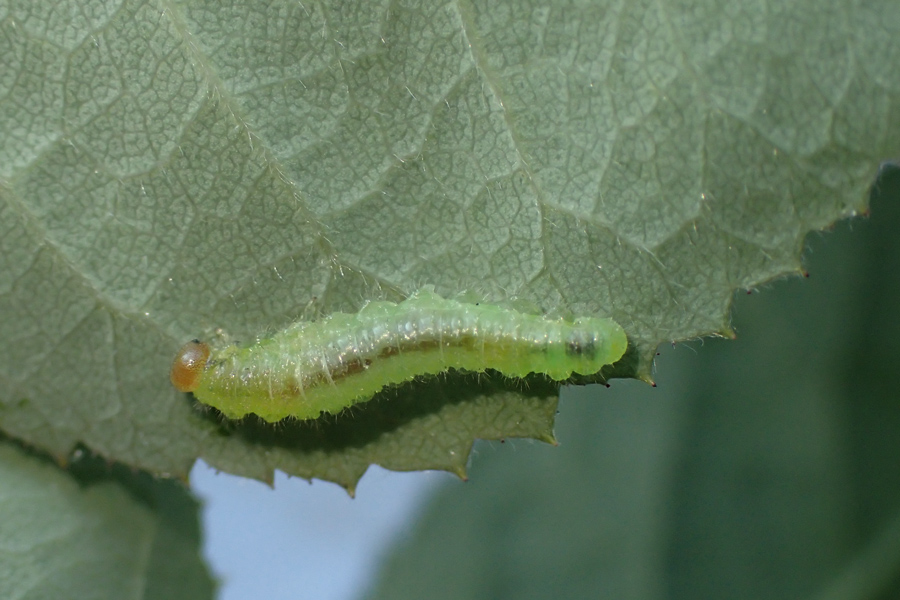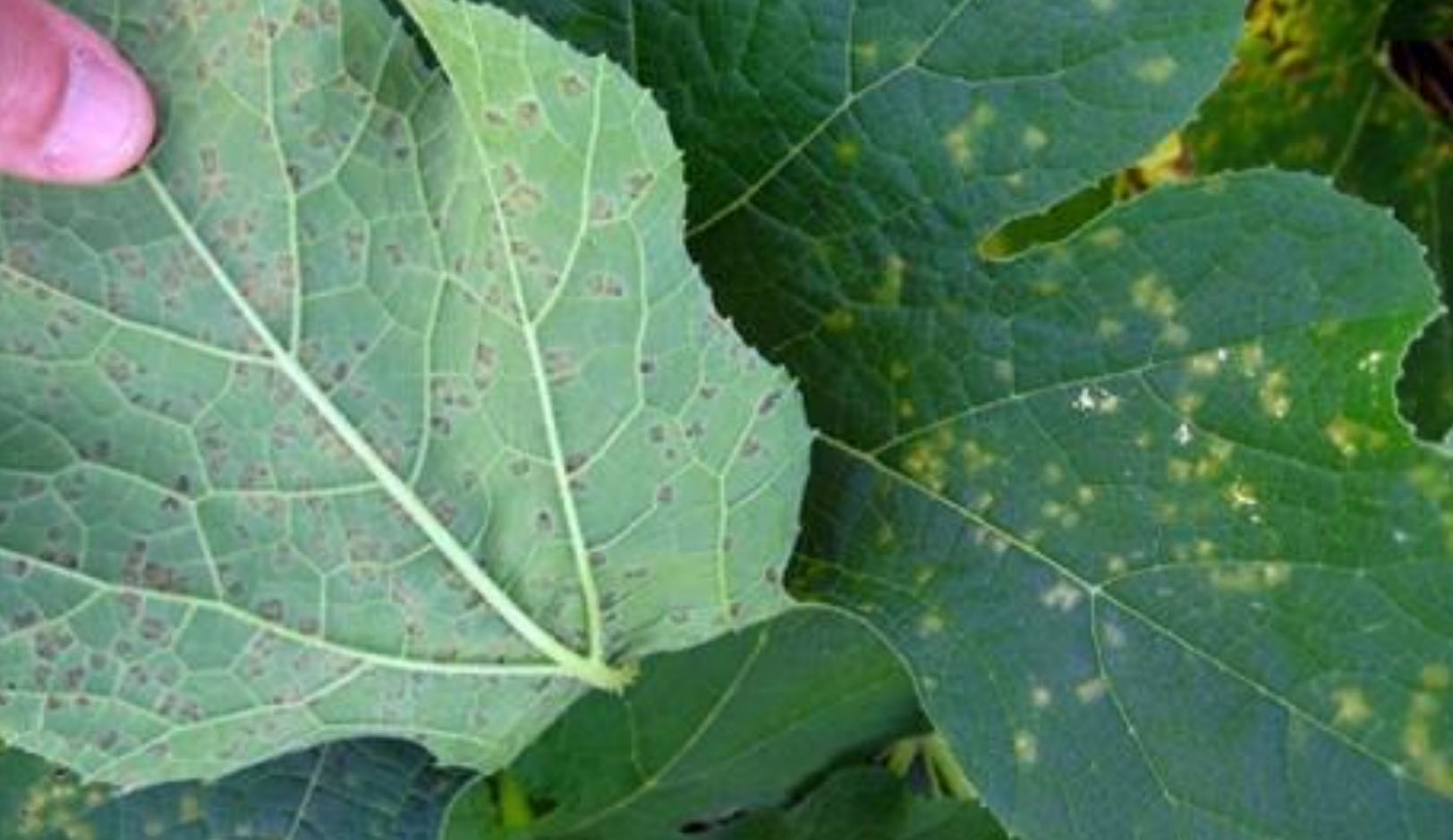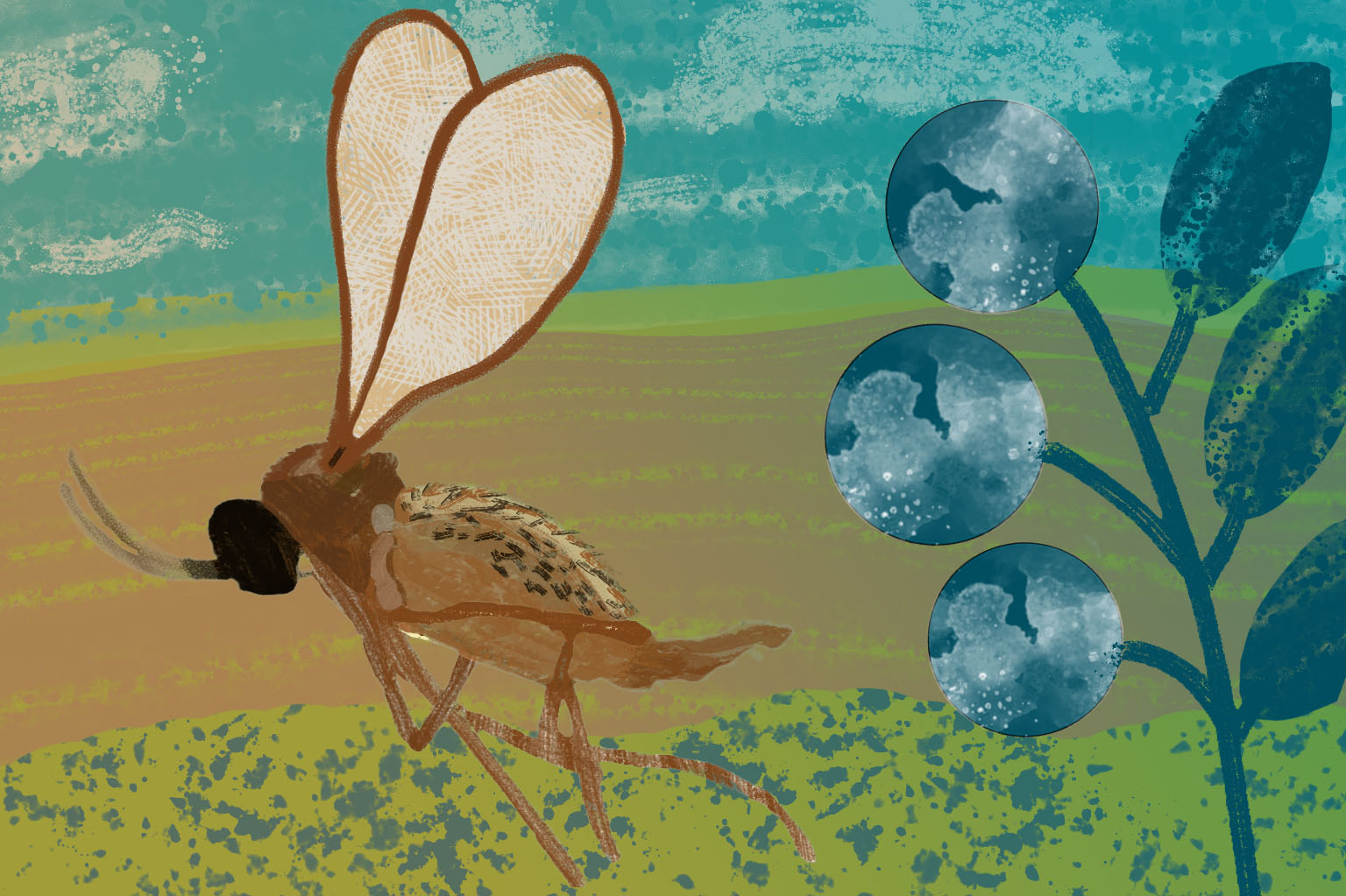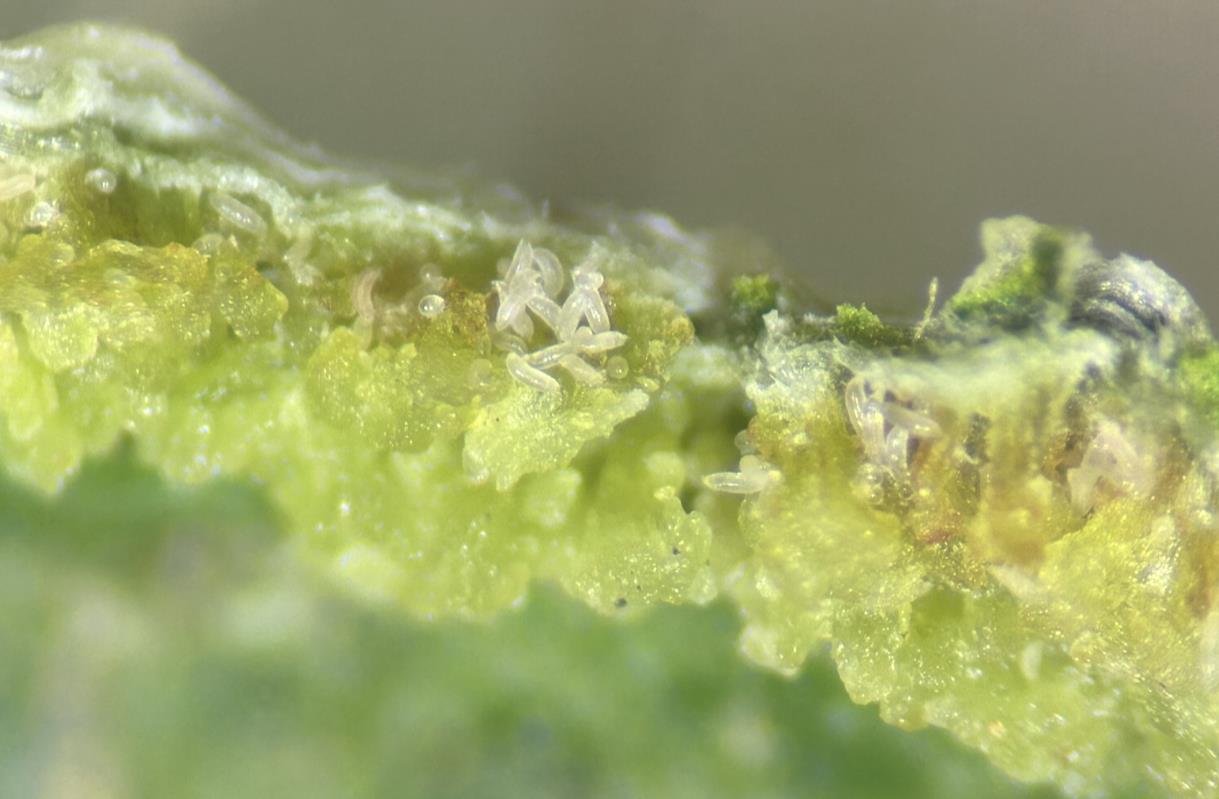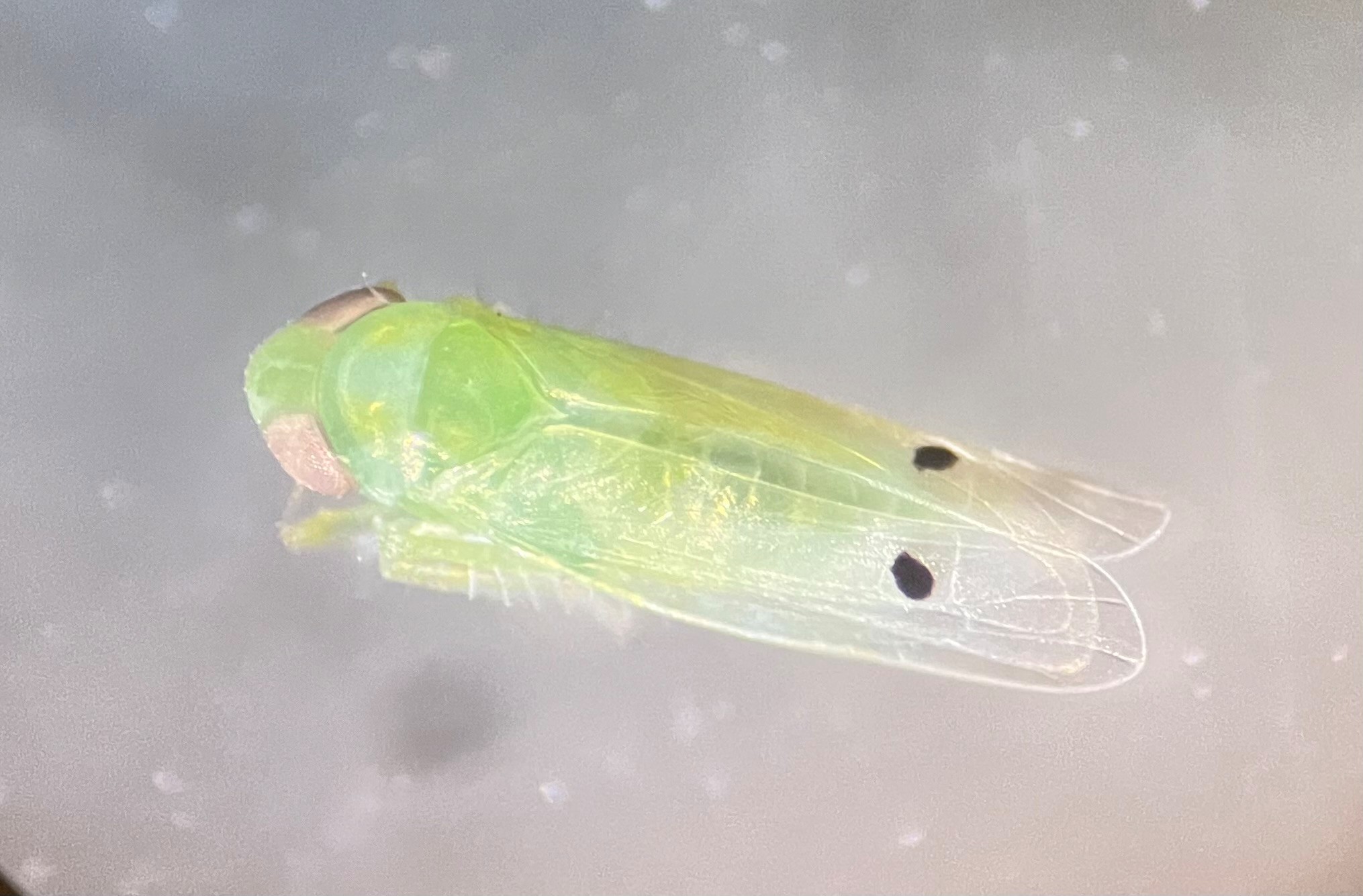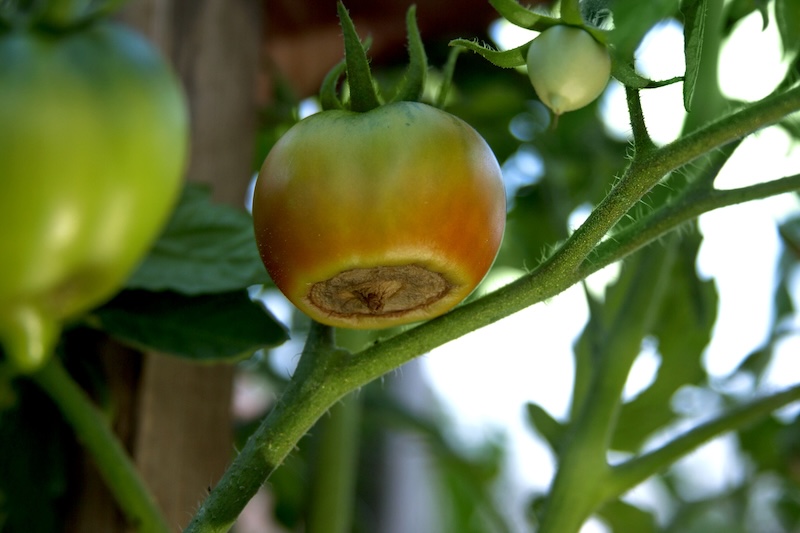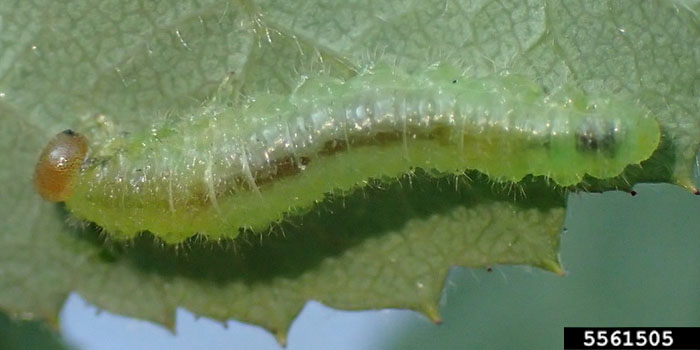
The bristly roseslug sawfly, Cladius difformis (Panzer), is a common species of roseslug in Georgia (Figure 1). The larval stages feed on rose leaves and cause extensive damage. Native to Europe, the bristly roseslug sawfly was accidentally introduced to the continental U.S. a few decades ago. This roseslug is particularly problematic on rose shrubs in ornamental landscapes.
Another roseslug common in the southeastern U.S. is the common or American roseslug sawfly, Endelomyia aethiops Gmelin. The curled rose sawfly, Allantus cinctus, is not common in Georgia. These roseslug species are not discussed in this article in detail.
Description and Life Cycle
Females of bristly roseslug sawfly insert eggs into the leaf petioles (stalks that connect leaves to the stem) in three rows. The eggs hatch and the tiny sluglike larvae move to the lower surface of the leaves and feed on the epidermal layer. The larvae of bristly rose slug sawfly have bristlelike hairs on the sides and back (visible in Figure 1), which is why they are referred to as “bristly”; however, these hairs are not visible to the naked eye. The late-stage larvae are about 3/4 in. long and appear lime-green with orange head capsules.
When ready to pupate, the mature larvae drop from the plant and pupate inside a cocoon in the soil. In some cases, they pupate on dried leaves attached to the plant. The emerging adults are black wasps about 1/2 in. long (Figure 2).
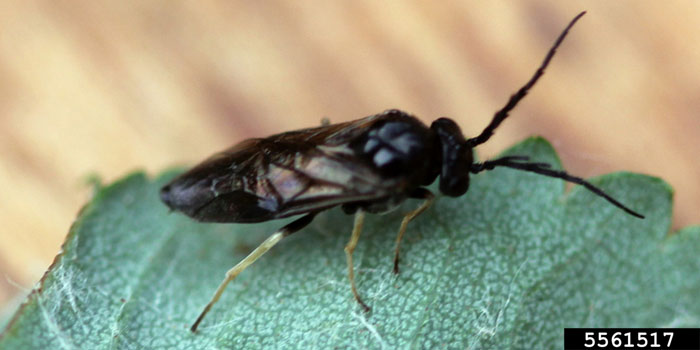
The antennae of female wasps are narrow and elongated (visible in Figure 2), whereas the base of the male’s antennae is comblike.
Bristly roseslug sawflies undergo multiple generations during the growing season. Rose shrubs are susceptible to damage from spring until the end of the fall. Each new generation results in extensive defoliation of rose plants as the number of roseslugs increases as the growing season progresses. Bristly roseslugs spend the winter as pupae inside earthen cells in the soil.
Bristly Roseslug Damage
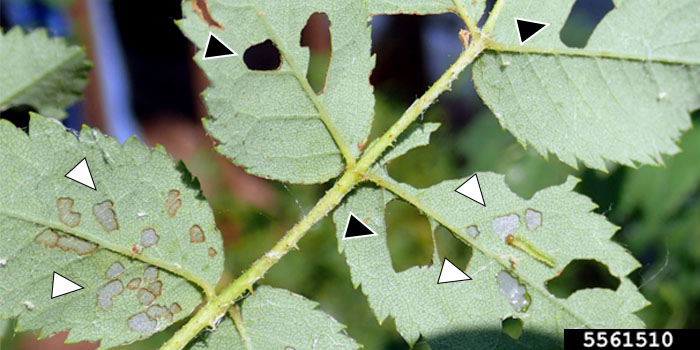
The larval stages are the destructive stages of bristly roseslug sawfly. The early-stage larvae scrape the leaf surface from the underside without feeding on the entire leaf tissue. This feeding behavior leaves the epidermal layer on the upper side of the leaf, which appears as white patches or spots referred to as “windowpanes” (Figures 3 and 4).
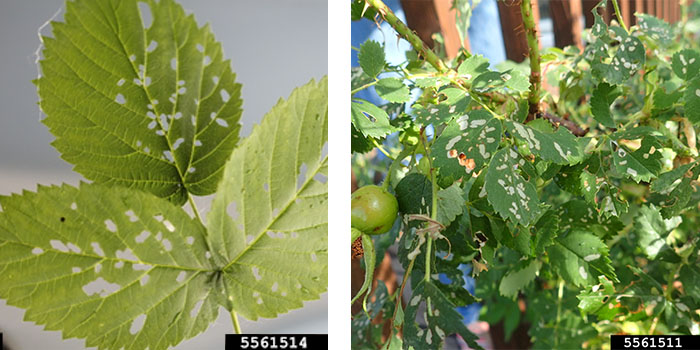
Eventually, the white areas collapse, resulting in irregularly shaped holes in the leaves. As larvae grow larger, they feed on the interveinal areas of leaves, leaving them looking “skeletonized” with only the mid-rib and veins remaining (Figure 5). This feeding initially causes large holes and may result in leaf drops when the infestation is high.
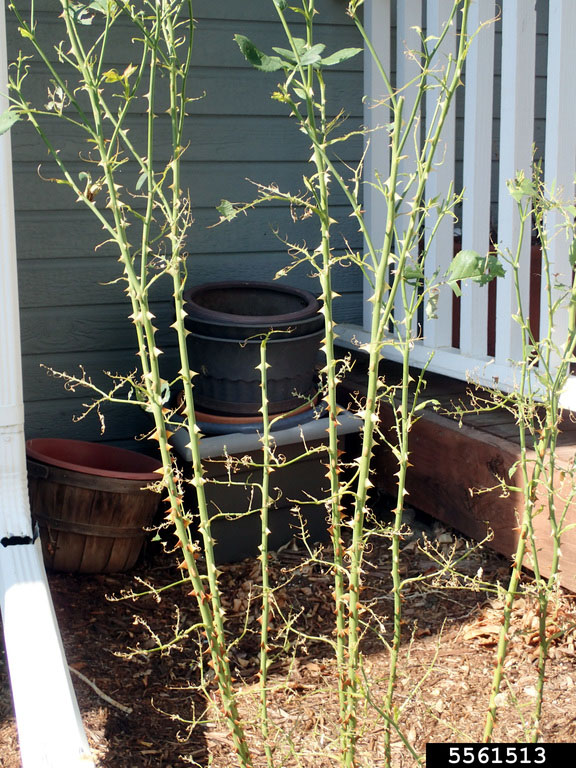
Host Plants
Bristly roseslug sawflies primarily attack wild and managed roses.
Monitoring Bristly Roseslugs
Feeding activity can be monitored through regular visual inspection. On roses, feeding begins in April and continues until October before frost events. Larvae are found on the underside of the leaves.
Management
Cultural practices, such as hand-picking and destroying the larvae, can help reduce roseslugs on rose plants. Spraying plants with high water pressure three times a week could dislodge some roseslugs from affected plants.
Because the bristly roseslug sawfly pupates in earthen cells, tilling the soil around or between rose plants multiple times during the growing season may destroy pupae in the soil. Tilling during late fall may kill the overwintering pupae and reduce their densities in the following growing season. There is limited information on effective biological control agents, such as predators and parasitoids, on bristly roseslug larvae.
Horticultural oils, neem oil, and insecticidal soap are effective for larval control. However, these products do not have residual activity, so repeated applications may be necessary for desirable control.
Foliar application of insecticides—such as pyrethroids (cyfluthrin, deltamethrin, lambda-cyhalothrin), neonicotinoids (acetamiprid, dinotefuran, imidacloprid), spinosad, spinetoram and sulfoxaflor (in combination), and chlorantraniliprole—are also effective on larvae.
Drench application of dinotefuran and imidacloprid in the spring can reduce larval densities. Ensure the insecticide solution is directly applied to the soil after removing the mulch (if applicable). Bt (Bacillus thuringiensis) products are not effective on bristly roseslug.
It is critical to follow the label instructions before applying any chemical insecticides, as improper applications can cause insecticide drift and unintended exposure to nontargets, including pollinators. Avoid applying insecticide directly to plants during bloom to protect pollinators.
References
Baker, J. (2021). Bristly roseslug. North Carolina Cooperative Extension. https://content.ces.ncsu.edu/bristly-roseslug
Boggs, J. (2019). Slugged rose leaves from a bristly pest. Ohio State University Extension. https://bygl.osu.edu/node/1267
Nixon, P. (2010). Bristly rose slug. University of Illinois Extension. https://hyg.ipm.illinois.edu/article.php?id=145
University of California Statewide IPM Program. (n.d.). Pests in gardens and landscapes. University of California Agriculture and Natural Resources, California Cooperative Extension. https://ipm.ucanr.edu/PMG/menu.homegarden.html
University of California Statewide IPM Program. (n.d.). Rose sawflies (roseslugs)—Allantus cinctus, Cladius difformis, and Endelomyia aethiops. University of California Agriculture and Natural Resources, California Cooperative Extension. https://ipm.ucanr.edu/PMG/GARDEN/PLANTS/INVERT/roseslug.html
